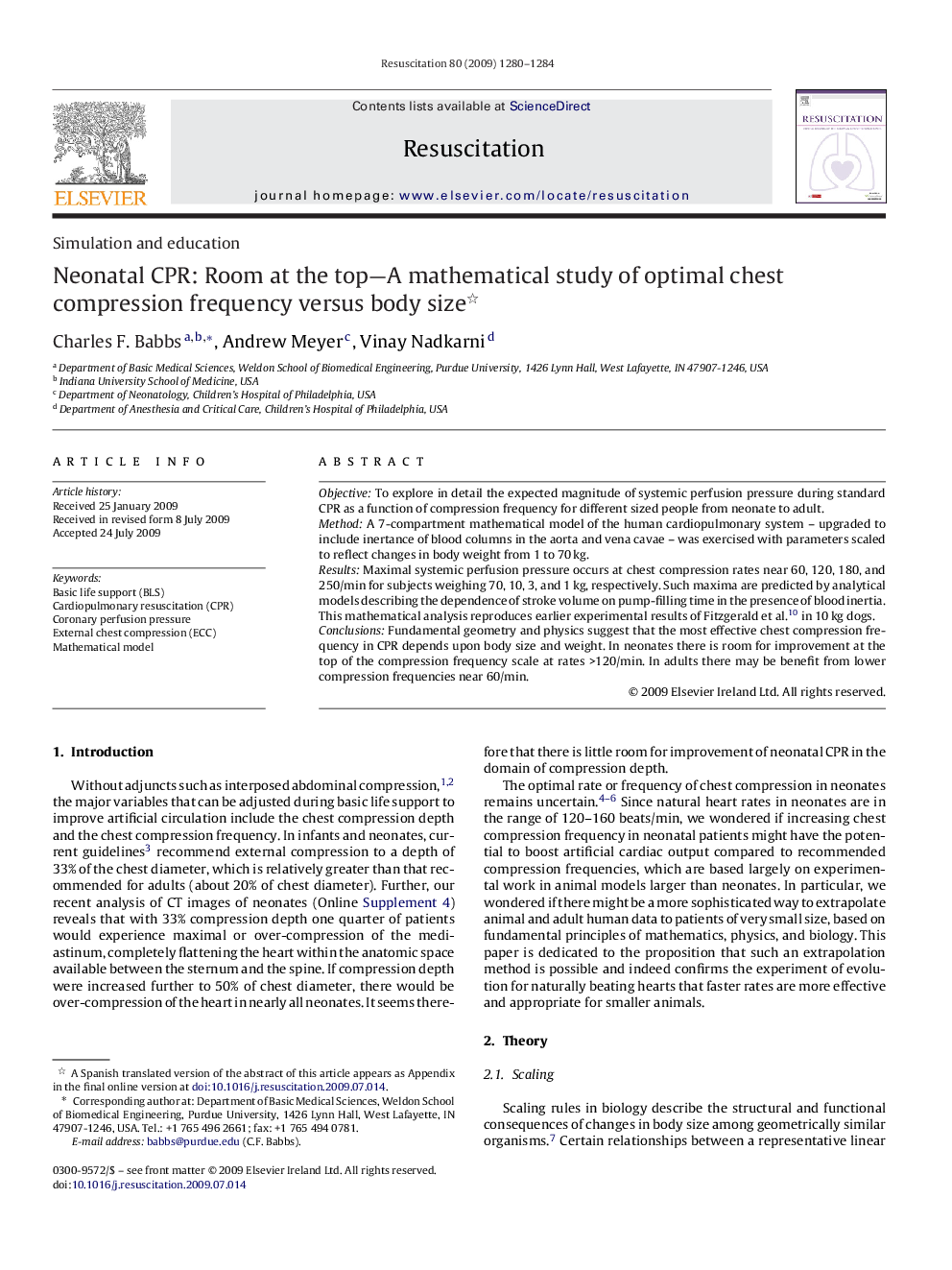| Article ID | Journal | Published Year | Pages | File Type |
|---|---|---|---|---|
| 3010262 | Resuscitation | 2009 | 5 Pages |
ObjectiveTo explore in detail the expected magnitude of systemic perfusion pressure during standard CPR as a function of compression frequency for different sized people from neonate to adult.MethodA 7-compartment mathematical model of the human cardiopulmonary system – upgraded to include inertance of blood columns in the aorta and vena cavae – was exercised with parameters scaled to reflect changes in body weight from 1 to 70 kg.ResultsMaximal systemic perfusion pressure occurs at chest compression rates near 60, 120, 180, and 250/min for subjects weighing 70, 10, 3, and 1 kg, respectively. Such maxima are predicted by analytical models describing the dependence of stroke volume on pump-filling time in the presence of blood inertia. This mathematical analysis reproduces earlier experimental results of Fitzgerald et al.10 in 10 kg dogs.ConclusionsFundamental geometry and physics suggest that the most effective chest compression frequency in CPR depends upon body size and weight. In neonates there is room for improvement at the top of the compression frequency scale at rates >120/min. In adults there may be benefit from lower compression frequencies near 60/min.
